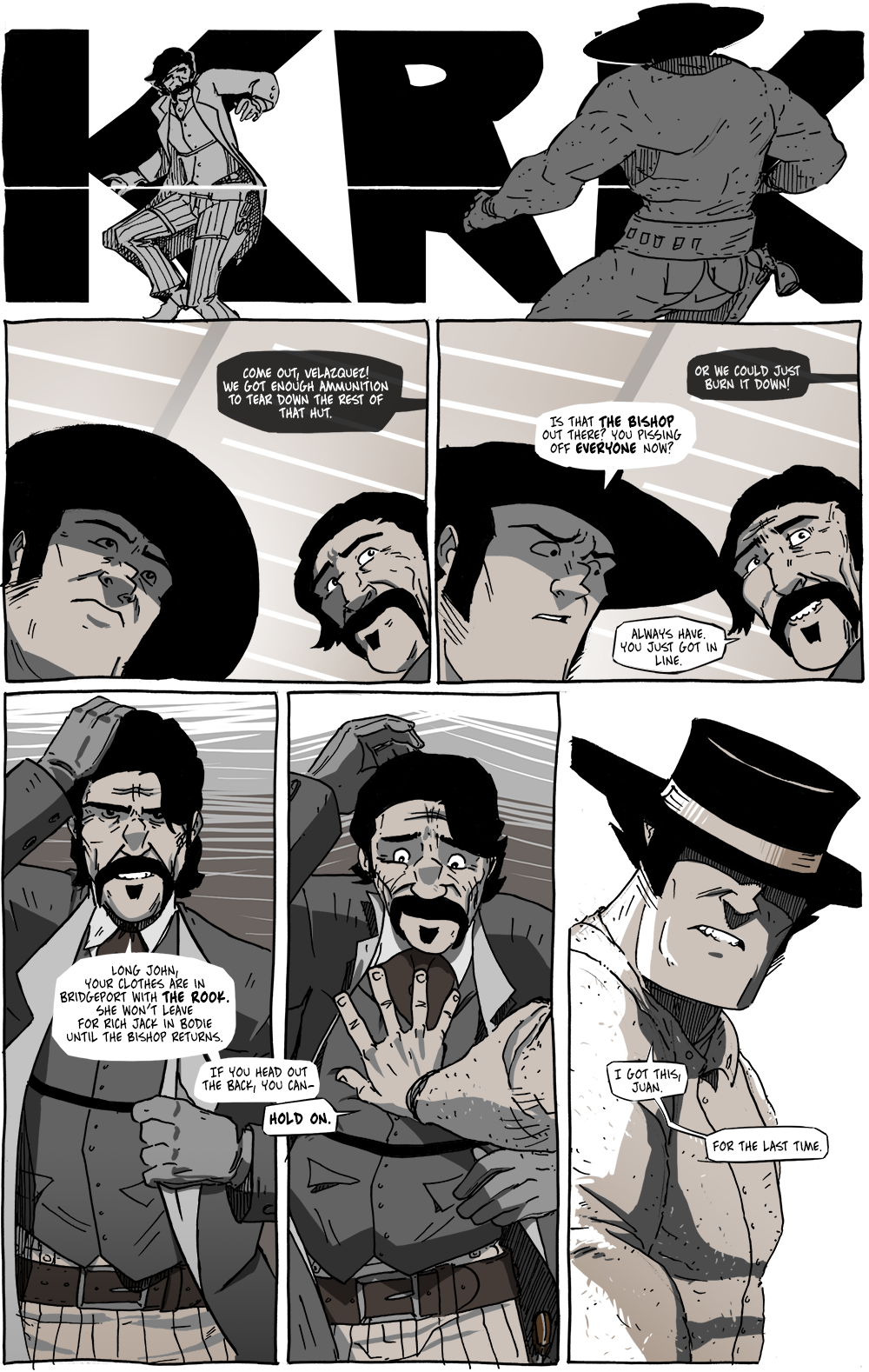Stepping Up
I’ve made it clear that this story is heavily inspired by the region in which it is set: the Mono Basin in the Eastern Sierra Nevada. More than just being a place, aspects of its history have inspired the story as well. From the deeper cuts like Lady May being a secret Ghost Dancer to lighter fare like calling what is now known as Lee Vining by its period appropriate name––Poverty Flat––I do my best to represent the area and its people and culture faithfully even if I do take liberty with other aspects. However, I have a few lines I won’t cross.
For one, I won’t mess with the geology nor the flora/fauna. Everything you see in this comic could exist in the Mono Basin. Chapter 2 had the most research as I was making sure the trees matched the elevation and, in a sense, you could get a good idea of how far up the mountain Long John went based on the trees that surround the cabin (versus the trees that surround Lundy). For an upcoming part of the Long John tale, I tore through four books and exhaustive internet searches just to see the type of seacraft the local Paiutes would construct. I even put a call into the Mono County Museum to verify the year that Bridgeport became known as Bridgeport (before then, it was known as Big Meadows). While not everything is accurate in Long John, there should be very little that’s wrong about the world it’s set in.
The things I do fudge are distances between towns and a little bit of the geology. More than once while drafting out the map of events did I have to scratch ideas because I wanted him to go to town X but it would literally be out of the way to take him there, for example. “But it’s got such a cool name!” I plead to myself before making arguments for and defenses against fudging those facts. That’s why you see very few Stetson-style cowboy hats on characters as they weren’t particularly in fashion at the time. The most common types of hats (at the time, again) were the flat brims that Long John wears and the fashionable wore bowlers (hence Boss Fleming in Chapter 1 wearing a bowler––he was a brute that wanted to present as fancy).
All of this to say that I do my research and have gathered quite the collection of sources that I pull from when needed. Initially, they were simply to get me familiar with the region and its history, and now that I have a basic working knowledge, I turn to these texts when I need details filled in––even then, sometimes, they let me down. So, below is the working Works Referenced for Long John at this point. They’re all good books, so consider them recommendations, too. (I’ll add this list to the site proper in the coming months, but this post is as good a place to post it first.)
Agnew, Jeremy. Medicine in the Old West: A History, 1850-1900. McFarland, 2010.
Cain, Ella M. The Story of Bodie. Fearon, 1956.
Cain, Ella M. The Story of Early Mono County: Its Settlers – Gold Rushes – Indians – Ghost Towns. Fearon, 1961.
Carle, David and Don Banta. Images of America: Mono Lake Basin. Arcadia, 2008.
Fletcher, Thomas C. Paiute, Prospector, Pioneer: The Bodie-Mono Lake Area in the Nineteenth Century. Community, 1987.
Geissinger, Terri Lynn. Images of America: Bodie 1859-1962. Arcadia, 2009.
Loose, Warren. Bodie Bonanza: The True Story of a Flamboyant Past. Nevada Publications, 1979.
Sprague, Marguerite. Bodie’s Gold: Tall Tales & True History from a California Mining Town. Nevada Publications, 2003.
Williams III, George. The Guide to Bodie and Eastern Sierra Historic Sites. Tree By the River, 1981.
Williams III, George. Rosa May: The Search For A Mining Camp Legend. Tree By The River, 1979.
It must be said that the main text I have used for developing Long John, and tends to be the first place I go to for information, is Bodie’s Gold by Sprague. Probably the most “professionally” published of the list, it is incredibly researched and written. If anything, I recommend it for simply being a good read as I would for being a point of reference. I have done some internet research as well, but mostly to confirm the information I find in these books. However, since it is a working Works Referenced, if I do find and use any internet-based sources, I’ll gladly add them to the list.
The point is this: things can be technically wrong in Long John, but they are most likely wrong on purpose, for the sake of the story. To that end, nothing should be ever so wrong that it breaks the story, setting, or time period.



Discussion ¬